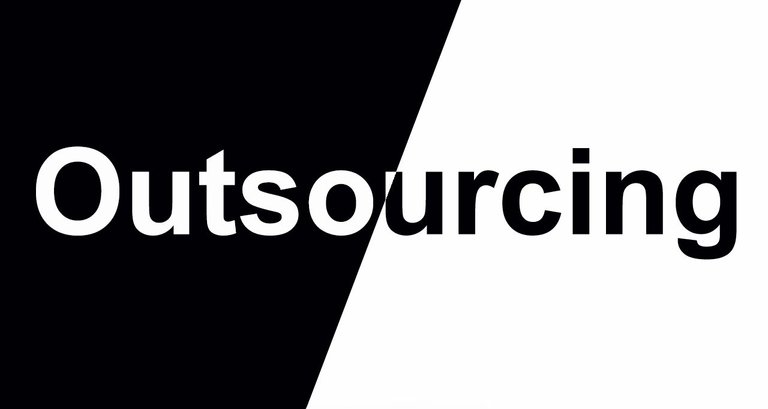
According to the market reports, ecommerce software is one of the fastest growing parts of the enterprise applications software market. The overall digital commerce software market is projected to reach $12.23 billion by the end of 2022.
Ecommerce has gone far beyond mere trading goods and services online. It also deals with fund transfers, data collection, supply and inventory management, online marketing and many other aspects. It uses not only the Web but also mobile, social and other technologies. Today ecommerce applications need to be integrated with external services, such as mailchimp, live chat, zendesk and so on. Besides, the ecommerce space is constantly evolving so that new demands and trends appear all the time.
When you start building your ecommerce app, it's easy to get lost in all this diversity. Luckily, there are some quite obvious rules that may help to sort things out:
- Focus on key things. Identify the core features that differentiate your product and add the greatest value to customers. Focus on implementing this key functionality.
- Start small. Do not try to implement all the features at once. Start from making a simple version and develop it step-by-step. This way, your app will get to the market sooner and then you can continue adding new features based on the latest market trends and your customers' preferences.
- Pick the right tech tools. Choose the technologies and tools that can both serve your current needs and provide enough space for scaling your application in the the future.
- Follow the right trends. New ecommerce trends and directions emerge and disappear all the time. You simply can't follow all of them, so choose only those that are really beneficial for your business.
Turnkey ecommerce platforms, why not?

One of the questions that rises when starting an ecommerce website is selecting the technology stack and two main options are using a CMS platform or coding a fully custom ecommerce site from the ground up.
The hosted ecommerce platforms, like Bigcommerce, Shopify or less known analogues like Getsocio, offer a lot of features and customizations. They allow making ecommerce sites quickly and help handling hosting, payment integrations, logistics and other stuff. The capabilities of these platforms are more than sufficient for creating and running quite nice online stores.
At the same time, the online shoppers' expectations continue to expand. Combined with the increased cybersecurity threats of today, this often requires more sophisticated solutions than the SaaS platforms can deliver. It also should be taken into consideration that, even if it works well at the beginning, one day your interests can grow beyond the limits of the selected CMS. Besides, the costs of running your website on a hosted ecommerce platform may be higher than expected as you will have to to pay various fees and commissions.
So, if you have an ambitious business idea, want to provide a truly unique experience to your customers and want to scale up your application in the future, it makes sense to consider coding it from scratch.
How to make an ecommerce site from scratch?

When choosing a programming language for your site, there are many options - Java, PHP, Ruby, Python - and, basically, any of them can work well. However, there is an opinion that Ruby on Rails has some noteworthy benefits.
It is a matter of fact that Ruby on Rails is a very popular framework - over 800,000 live websites are using RoR and it is widely used for building ecommerce sites, including well-known ones like Airbnb and Yellow pages.
Let's see why Ruby on Rails is good for building ecommerce websites:
- Cost efficiency. Rails is perfect for fast prototyping. It allows you to check the feasibility of your idea without investing too much in it.
- Speed. Ruby on Rails is an open-source web framework and has huge community of developers. So, there are ready-made solutions for many features. Besides, it is highly automated which allows saving time on routine tasks.
- Flexibility. Ruby on Rails embraces the DRY and modular approaches, which reduces the code length, facilitates making modifications and integrating ecommerce sites with various third-party services.
- Reliability. Ruby on Rails development goes hand in hand with automated testing. This helps to ensure that all functionalty works correctly and to deliver highly reliable software products.
Being quick, cost-effective and agile are critical factors that many ecommerce businesses are looking for. Ruby on Rails comes in handy here as it allows building feature-rich web applications and adapting them to the changing requirements faster than other programming languages.
Pros and cons of outsourcing ecommerce development?

After choosing the technology for your project, you have to hire an in-house development team or outsource it to a good software development company. Outsourcing is usually is the best option as it may not be easy to find suitable developers locally and having an in-house developers is associated with substantial overheads.
Advantages of outsourcing:
- Expertise. You can choose a software company with a proven track record in developing ecommerce applications similar to what you want and take the benefit of their expertise.
- End-to-end development. Your ecommerce website requires not only coding but also a stunning design, deploying to your server, integration with your existing business systems, etc. A full-stack software company will take care of all that stuff for you.
- Convenient budgeting. With outsourced development team, you have more flexibilty in terms of payment schedule and rates. You can pay for the development services on hourly basis or request a fixed cost quote for a certain amount of work.
- Project-based services. You can pause and resume work of the outsourced developers at any time and you will not have to pay full-time salaries during the breaks like with in-house employees. You also do not have to worry that your developer may resign or get ill before completing the project.
Disadvantages of outsourcing:
- Communication. Different time zones, language and cultural barriers may cause certain difficulties in communication. Make sure that the overseas developers understand you well and that they can adjust their working time to your schedule.
- Quality. To avoid the risk of getting the application that do not meet your expectations, it's better to deal with established software companies that have a proven experience in delivering high quality ecommerce projects.
- Timing. The best development teams can have a busy schedule and some time may pass before they become available for your project.
A few tips for choosing and managing an outsourced development team
There are many ways to find an outsourcing services provider - freelance marketplaces, googling, etc. However, how to choose the right one for your project? Here are some key things to consider
- References. Ask for references or look for testimonials from their former clients at a review site, like Clutch.co.
- Portfolio. The live websites delivered by the developers you are going to hire is a good way to assess their level of expertise.
- Negotiation. Clearly explain your needs, expectations and collaboration terms, like approach to communication, project management, reporting and payment terms.
- Honesty. Avoid over-promising providers and give preference to those who insist on realistic time and cost estimates when it means that they can lose your project.
One more important issue is an efficient managing your remote team. Here are some things to consider:
- Stay involved in the development process. Check the progress of your project on a daily basis and ask for regular updates from your development team.
- Communication is the key. Establish an effective communication workflow with the offshore developers and give preference to video conferences over voice chats or emails.
- Be agile. Frequently provide your feedback, address the problems as soon as you see them and ask for insights form the development team on how to solve them.
Learning from someone else's experience helps to avoid many pitfalls. Here is an article that shares some valuable lessons on building a web application with the offshore development team.
Like with any business venture, building a good ecommerce website may be challenging. It requires thorough planning, monitoring and lots of iterations until you get it up and running. Hopefully, this article has provided some useful thoughts on how to succeed with this.
About Me
I am Dariya Lopukhina, you can find me on Twitter and LinkedIn.
Read me on Anadea blog or at Steemit!
Some of popular trends in ecommerce website development are:
Live-streams and videos. Videos are more personal than photos, give a much better idea of how the product will look like in real life and encourage people to buy it.
Augmented and virtual reality. Ecommerce vendors adopt AR and VR for promoting their products and helping consumers to get a feel of an item before making a purchase.
Chatbots. Using chatbots help online stores provide better and faster customer service to online shoppers.
Sure, implemeting all the new developments into each new ecommerce site is hardly possible and may significantly increate the app development cost. Thus, it's necessary to carefully weigh their usefulness and implementation cost before rushing to add them all to your site.
As far as eCommerce Development is concerned, Magento eCommerce Development is able to cater to all the eCommerce requirements easily.
The scalability and functionality seem to be successfully accomplished with a handful of efforts.
To read more, visit https://bit.ly/2TWbmK8